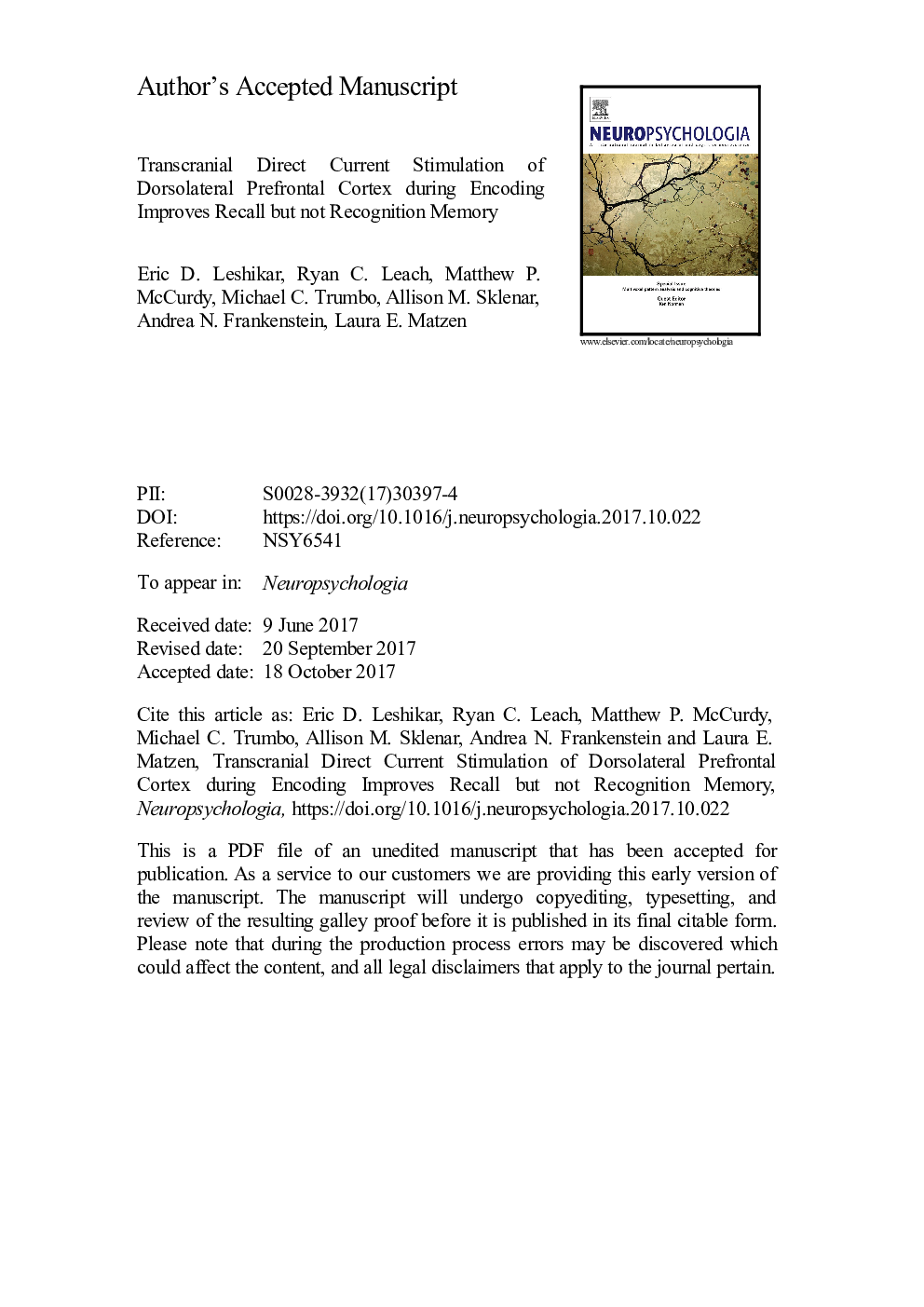| Article ID | Journal | Published Year | Pages | File Type |
|---|---|---|---|---|
| 7318445 | Neuropsychologia | 2017 | 33 Pages |
Abstract
Prior work demonstrates that application of transcranial direct current stimulation (tDCS) improves memory. In this study, we investigated tDCS effects on face-name associative memory using both recall and recognition tests. Participants encoded face-name pairs under either active (1.5Â mA) or sham (.1Â mA) stimulation applied to the scalp adjacent to the left dorsolateral prefrontal cortex (dlPFC), an area known to support associative memory. Participants' memory was then tested after study (day one) and then again after a 24-h delay (day two), to assess both immediate and delayed stimulation effects on memory. Results indicated that active relative to sham stimulation led to substantially improved recall (more than 50%) at both day one and day two. Recognition memory performance did not differ between stimulation groups at either time point. These results suggest that stimulation at encoding improves memory performance by enhancing memory for details that enable a rich recollective experience, but that these improvements are evident only under some testing conditions, especially those that rely on recollection. Overall, stimulation of the dlPFC could have led to recall improvement through enhanced encoding from stimulation or from carryover effects of stimulation that influenced retrieval processes, or both.
Related Topics
Life Sciences
Neuroscience
Behavioral Neuroscience
Authors
Eric D. Leshikar, Ryan C. Leach, Matthew P. McCurdy, Michael C. Trumbo, Allison M. Sklenar, Andrea N. Frankenstein, Laura E. Matzen,
